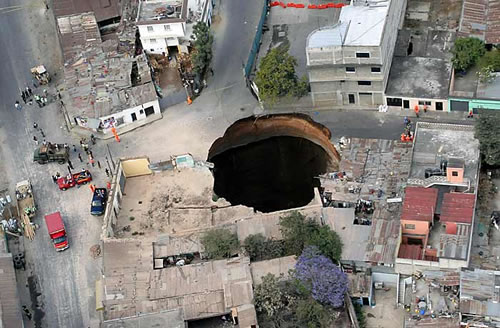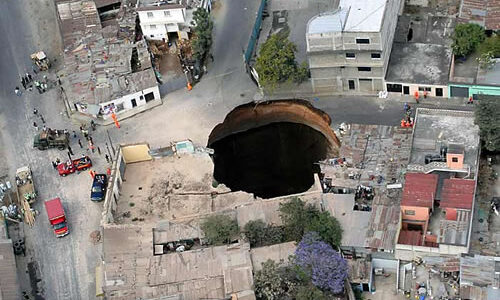Sinkholes: Unraveling Earth’s Mysterious Cravings – Beneath the familiar landscapes we traverse lies a geological phenomenon that can reshape the very ground we walk on—the sinkhole. These enigmatic depressions in the Earth’s surface have captured the curiosity of scientists and the imagination of people around the world.
This article embarks on a journey to unveil the causes of sinkholes, their intriguing nomenclature, their presence in urban environments, and the structural aspects that underlie their formation. slot
What Causes Sinkholes?
Sinkholes are primarily caused by the dissolution of soluble rocks, such as limestone, gypsum, and salt, beneath the Earth’s surface. Over time, water seeps into cracks and cavities within these rocks, gradually eroding them and creating voids.

As the rock continues to dissolve, the ground above becomes unstable, eventually collapsing to form a sinkhole. Natural processes like heavy rainfall, changes in groundwater levels, and human activities that alter the water flow can trigger or exacerbate sinkhole formation.
What is the Sinkhole Called?
Sinkholes are often referred to as “swallow holes,” “shake holes,” or simply “sinkholes.” The term “sinkhole” accurately describes the phenomenon—a hole that forms when the ground sinks into a void below. The names reflect the sudden and sometimes dramatic nature of these depressions.
What is a Sinkhole in the Street?
A sinkhole in a street, often referred to as a “roadway sinkhole,” is a type of sinkhole that forms beneath paved surfaces, including roads, sidewalks, and parking lots. These sinkholes can be particularly dangerous as they can appear suddenly, posing risks to pedestrians, vehicles, and infrastructure. They are typically caused by water infiltrating the ground beneath the pavement, causing erosion and subsidence.
What is Sinkhole Structure?
The structure of a sinkhole can vary based on its formation and the type of rock involved. However, sinkholes generally exhibit a distinct structure:
- Surface Opening: A sinkhole begins with a depression or opening at the surface. This can range from a small depression to a large hole, depending on the size of the void beneath.
- Bowl-shaped Depression: The sinkhole often takes on a bowl-shaped appearance as the ground collapses into the void below. The edges of the depression can be jagged or smooth, depending on the nature of the rock.
- Underground Cavity: Beneath the depression lies an underground cavity or void created by the dissolution of soluble rock. This void can be extensive and can continue to grow over time.
- Potential for Subsidence: If left unchecked, the sinkhole can continue to expand, potentially causing subsidence of the surrounding area and posing risks to structures and infrastructure.
Conclusion: Unveiling Nature’s Unpredictability
Sinkholes, with their sudden appearance and transformative impact, serve as reminders of the dynamic nature of our planet’s geology. From dissolving rocks beneath our feet to creating depressions that can swallow entire structures, sinkholes exemplify the Earth’s ability to shape and reshape its surface. As we navigate the intricacies of our world, sinkholes stand as a testament to the awe-inspiring processes that have been at play for millennia, shaping the landscapes we call home.

